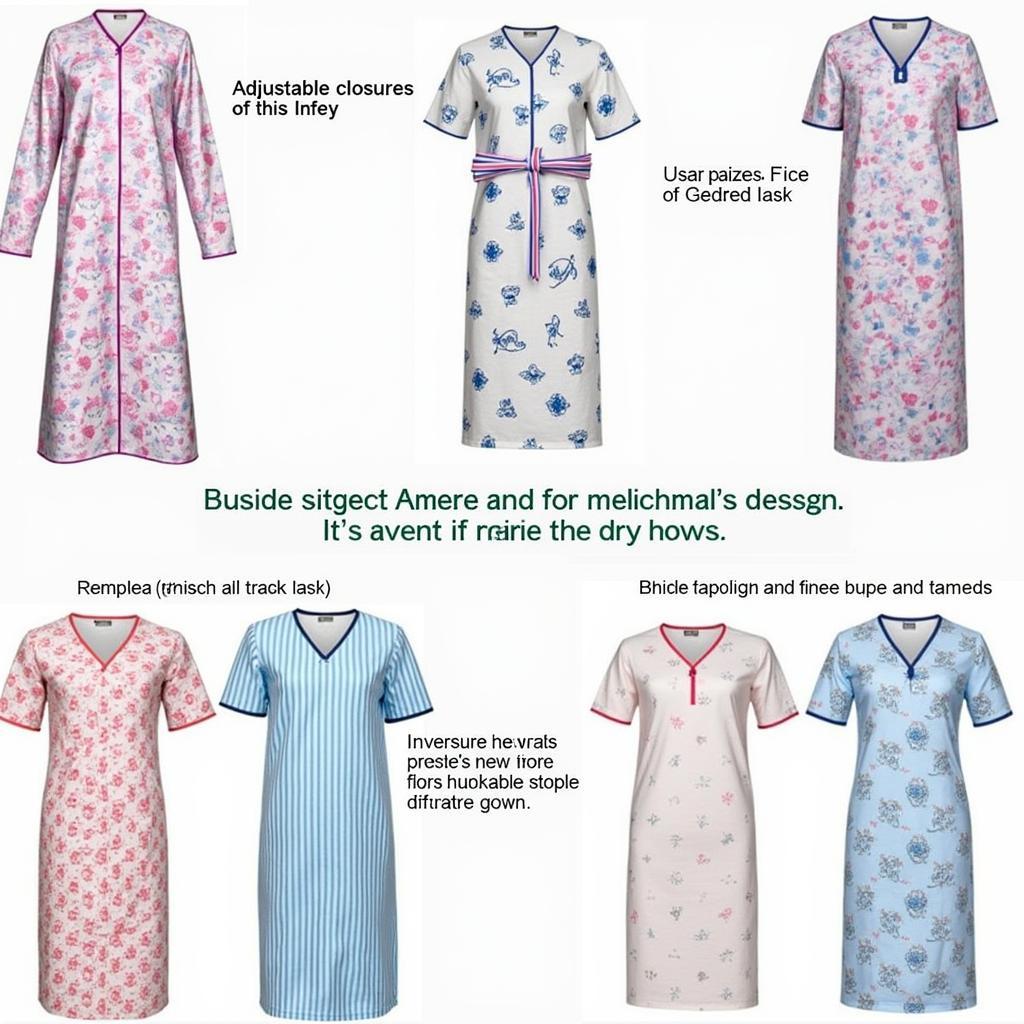Hospital gowns. Those often-thin, tie-in-the-back garments are synonymous with vulnerability and medical care. Whether you’re anticipating a hospital stay or simply curious, understanding the role and evolution of the hospital gown can offer valuable insights. This guide explores everything from the history of hospital gowns to the future of patient attire.
A Brief History of the Hospital Gown
Before the modern hospital gown, patients often wore their own nightclothes. The shift to standardized garments came with the rise of modern hospitals and a focus on hygiene. Early gowns were often made of reusable materials and designed for practicality over comfort. Over time, concerns about infection control and patient comfort led to changes in design and materials.
The Modern Hospital Gown: Function and Features
Today’s hospital gowns are typically made of disposable, non-woven fabrics designed for single-use to minimize the spread of infection. They feature openings for easy access during medical examinations and procedures. While functionality remains paramount, there’s a growing emphasis on patient dignity and comfort.
Why the Open Back?
The open-back design, while sometimes embarrassing for patients, allows medical professionals quick and easy access for examinations and treatments. This design also facilitates temperature regulation and allows for easy changing, particularly for patients with limited mobility. However, newer designs are addressing the modesty issue with more comprehensive coverage options.
The Future of Hospital Gowns: Innovation and Patient-Centered Design
The future of the hospital gown is focused on enhancing patient comfort and dignity. Innovations include gowns made from more comfortable and breathable fabrics, designs that offer greater coverage and modesty, and even personalized options. Some hospitals are experimenting with gowns that incorporate snaps or other closures for improved privacy.
Addressing Patient Concerns: Dignity and Comfort
Beyond the practical considerations, the psychological impact of wearing a hospital gown cannot be overlooked. Feeling exposed and vulnerable can add to a patient’s stress and anxiety. New designs are addressing these concerns by incorporating features like adjustable closures, more comfortable materials, and patterns that offer a sense of normalcy.  Modern Hospital Gown Designs: Comfort and Dignity
Modern Hospital Gown Designs: Comfort and Dignity
Beyond the Gown: Patient Attire Alternatives
Some hospitals are moving beyond the traditional gown altogether, offering patients alternatives like pajama sets or scrub suits. These options provide more comfort and coverage, allowing patients to feel more at ease during their stay.
What About Bringing Your Own Clothes?
In some cases, patients may be allowed to wear their own clothing, particularly if their mobility isn’t restricted. However, this depends on the specific hospital policy and the nature of the patient’s condition. It’s always best to check with the hospital beforehand.
Conclusion: The Hospital Gown – A Symbol of Care and Comfort
The hospital gown, while a simple garment, plays a significant role in the patient experience. From its humble beginnings to the innovative designs of the future, the hospital gown continues to evolve, reflecting a growing emphasis on patient comfort, dignity, and overall well-being. As technology and design continue to advance, we can expect even more comfortable and patient-centered hospital attire in the years to come. Remember, when it comes to hospital gowns, functionality and patient well-being are key.
FAQ
- Can I bring my own hospital gown?
- What are hospital gowns made of?
- Why are hospital gowns always open in the back?
- Are there different sizes of hospital gowns?
- How are hospital gowns cleaned?
- Can I refuse to wear a hospital gown?
- What is the future of hospital gowns?
When you need assistance, please contact us at Phone Number: 02437655121, Email: [email protected] Or visit us at: No. 298 Cau Dien Street, Minh Khai, Bac Tu Liem, Hanoi, Vietnam. We have a 24/7 customer service team.